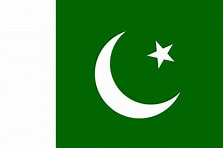Systematic Denial of Atrocities
Since the day of the tragic massacre of Hindus in Kashmir, many Western legacy media outlets—particularly American ones like CNN, Associated Press (AP), and The New York Times (NYT)—have engaged in systematic atrocity denial. Through subtle manipulations of language, they confuse, minimize, and ultimately trivialize the scale and magnitude of the tragedy, denying the reality of what transpired.
Linguistic Distortion to Obfuscate Reality
The manipulation occurs both textually and contextually, using linguistic strategies that alter the very nomenclature and interpretation of events. For example, by framing the attack as “indiscriminate spraying of bullets,” these outlets challenge the reality that Hindus were specifically targeted. This linguistic camouflage dilutes the fact that this was a religiously motivated, targeted cleansing, backed by an adversarial state across the border, and reduces it to an act of random bloodletting.
Shaping Public Cognition and Value Judgments
The ultimate aim is to shape how the public “sees” and “interprets” the massacre. Within Western academic and media discourse, not all identities are treated equally. Hindus are often denied the status of legitimate victims because, according to these frameworks, they are seen as “oppressors,” not as an oppressed group. Therefore, the religious identity of the victims is deliberately obscured, presenting the massacre as random violence rather than targeted ethnic cleansing.
Victims Misrepresented as “Collaborators”
The narrative is further skewed to paint the Indian state as the oppressor and Islamist terrorists as “rebels,” “militants,” or “gunmen” airing their grievances. Victims are subtly portrayed not as innocent civilians but as “collaborators” deserving of their fate. This tactic of narrative inversion ensures the horror of the attack is systematically denied or justified.
Case Study: Associated Press’s Malicious Reporting
Consider the reportage by Aijaz Hussain, Sheikh Saaliq, and Rajesh Roy for AP:
“India blamed Pakistan on Wednesday for a militant attack that killed 26 people in Indian-held Kashmir, downgrading diplomatic ties and suspending a crucial water-sharing treaty that has withstood two wars between the nuclear-armed rivals… The spray of gunfire at tourists Tuesday…”
Notice the use of terms like “militant attack,” “spray of gunfire,” and “tourists.” By avoiding the word “terrorist,” the report downplays the crime’s heinousness and subtly questions India’s sovereignty by using the phrase “Indian-held Kashmir.” There is a deliberate erasure of the Hindu identity of the victims, painting the event as random violence.
Justifying Terror Through Twisted Narratives
AP’s report even quotes a terrorist group’s statement suggesting that the victims were not “ordinary tourists” but affiliated with Indian security agencies. Such framing grotesquely justifies terrorism under the pretext of political struggle and is a disgraceful low in journalistic ethics.
Moreover, AP’s photo selection adds insult to injury—highlighting the grief of the lone Muslim victim’s family while sidelining the Hindu victims who were specifically targeted. This selection is not coincidental but fits neatly into the larger narrative of Hindu villainization and Muslim victimhood.
The New York Times: A Study in Gaslighting
The NYT’s reporting is similarly insidious. Even after public rebukes, such as by the US House Committee on Foreign Affairs, NYT continues to label terrorists as “militants” and minimizes the massacre of Hindus to mere hearsay:
“General Hooda said… witness accounts in Indian media suggested Hindus had been singled out…”
The NYT report refuses to acknowledge the targeted nature of the massacre, trivializes survivors’ experiences, and instead focuses on political implications, treating the tragedy as a backdrop for Indo-Pak rivalry rather than a humanitarian catastrophe.
Distorting Reality and Undermining India’s Sovereignty
Throughout their reporting, NYT emphasizes India’s supposed “rash” reaction to Pakistan and frames the tragedy in a manner that infantilizes the Indian government. Peace, development, and normalcy achieved in Kashmir post-Article 370 are dismissed as mere “illusions shattered.”
Such framing seeks to deny India the right to respond forcefully to terrorism, invoking the specter of “nuclear escalation” to argue against any decisive action. This false equivalence between a terror-sponsoring state and a victim nation is both immoral and intellectually dishonest.
Selective Empathy and Heartless Storytelling
The NYT even dehumanizes survivors. As pointed out by Indu Viswanathan on X, the NYT describes a grieving young woman by her jacket color, ignoring the heartbreaking reality that she was a Hindu bride mourning her newlywed husband. Such tone-deaf descriptions betray a complete lack of empathy and a calculated attempt to obscure the true horror.
Conclusion: Identity Politics and Narrative Injustice
The selective terminologies, semantic trickery, and deliberate erasures by Western media are not random mistakes—they are deeply ideological choices. In the Western framework of identity politics, Hindus are forever relegated to the margins. Regardless of the magnitude of suffering—massacres, ethnic cleansing, or genocide—Hindus are denied true victimhood.
Their grief is minimized, their tragedies reframed, and their lived experiences twisted to fit a global narrative where only certain groups are allowed to claim moral high ground. In this distorted reality, even mourning becomes suspect if Hindus do it.
Thus, the Western media’s biased reportage on the Kashmir massacre represents not merely bad journalism but a deeper, more dangerous form of ideological warfare against truth and justice.








